As 3D printing continues to evolve, materials like PEBA (Polyether Block Amide) are setting new benchmarks in flexibility, resilience, and design freedom. Compared to traditional TPU filaments, PEBA offers superior elasticity, lighter weight, better long-term deformation resistance, and exceptional interlayer fusion—making it a game-changer for a wide range of high-performance applications.
Why PEBA Over TPU?
PEBA outperforms TPU in multiple critical aspects:
-
Elasticity on par with a basketball
-
Lower density than TPU
-
Outstanding creep resistance under long-term pressure
-
Superior interlayer bonding
-
Customizable mechanical response via lattice structure
These attributes make PEBA not only flexible but also strong, tough, and highly tunable for different structural needs.
Three Grades, Three Use Cases
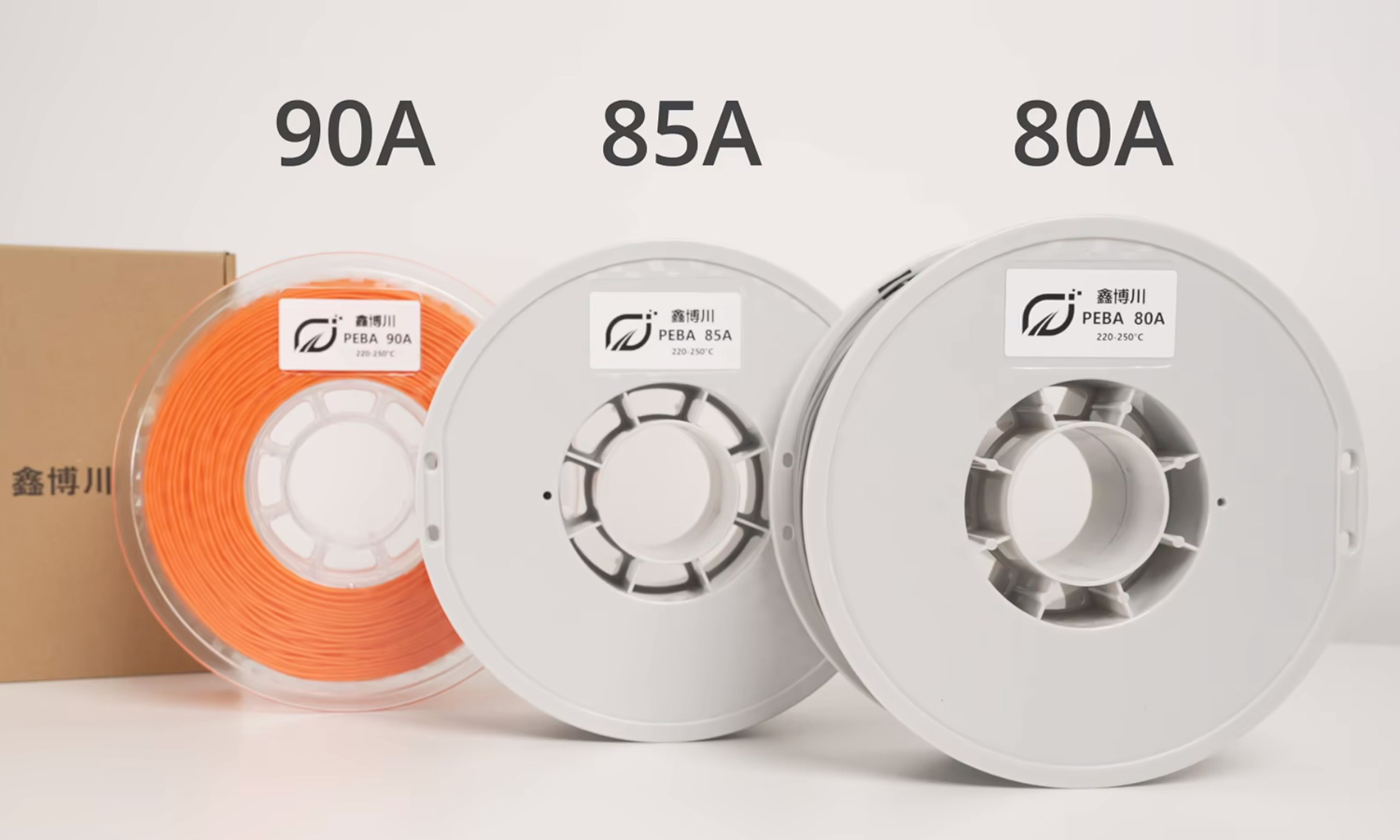
PEBA filaments are currently available in three Shore hardness levels: 80A, 85A, and 90A, each with distinct properties:
| Grade | Key Traits | Applications |
|---|---|---|
| PEBA 80A | Ultra soft and flexible | Insoles, shock-absorbing padding, comfort zones |
| PEBA 85A | Balanced softness with excellent support and creep resistance | Prosthetic limbs, lumbar supports, cushions |
| PEBA 90A | Stiffer, tougher, ultra-fast rebound | Robotics, wearable exosuits, sports gear |
Real-World Application: Prosthetics Reinvented
TPU has been widely used in 3D-printed prosthetics, but its limitations are evident under repeated load. For example:
A TPU 90A foot prosthetic worn by a 160 cm, 45 kg patient began collapsing after 6 months. He had to rotate between multiple pairs due to structural fatigue.
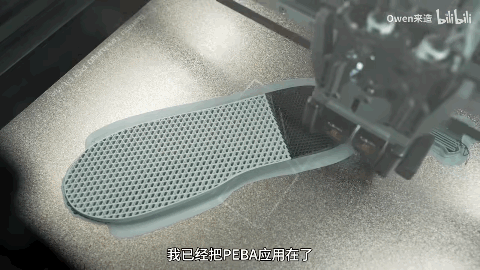
Compression Test (24 Hours Under 3kg Weight):
| Material | Initial Height | Compressed | After 24h | Rebound (2h Later) |
|---|---|---|---|---|
| TPU 90A | 49mm | 21mm | 17mm | 45.5mm |
| PEBA 85A | 49mm | 41mm | 41mm | 47.5mm |
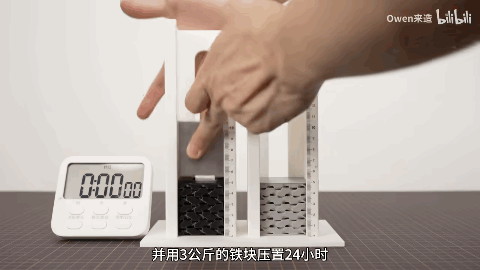
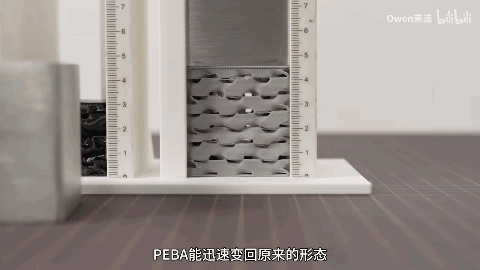
The PEBA block retained structure, rebounded rapidly, and didn’t require rest or reshaping—making it ideal for prosthetics, orthotic insoles, and medical wearables under frequent stress.
Structure-Sensitive Performance: Lattice Matters
One of PEBA’s unique properties is how small changes in internal structure drastically alter the feel of a printed object—a behavior not commonly found in TPU or other elastomers.
For instance:
-
A lattice with 1.5mm spacing feels soft and bouncy.
-
The same filament with 2.5mm spacing results in a firmer, more resilient part.
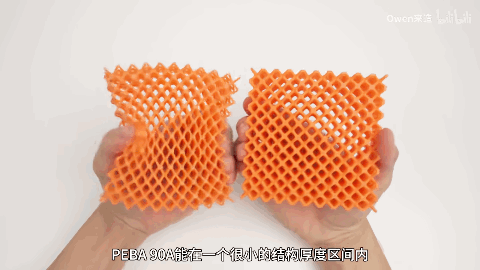
This structure-sensitive elasticity enables advanced designs such as:
-
Gradient shoe midsoles that blend cushioning and support
-
Custom-tuned insoles or cushions
-
Performance-enhanced soft robotics
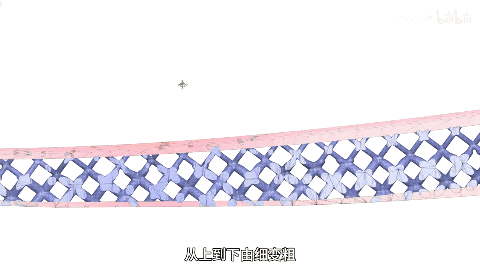
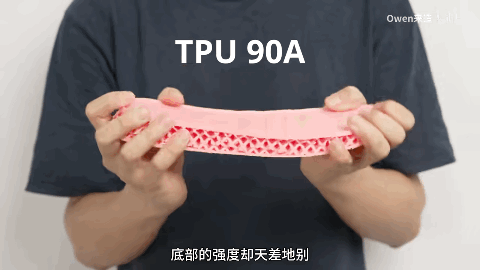
Shock Absorption and Impact Resistance
PEBA’s impact resistance sets it apart from standard flexible filaments. In combat robotics tests, a robot armored with PEBA endured direct hits from high-speed rotating metal blades—suffering only surface-level scarring, without structural penetration.
This outstanding shock absorption makes PEBA ideal for:
-
Drone housings
-
Protective wearables
-
Contact-prone robot parts
-
Industrial covers and guards
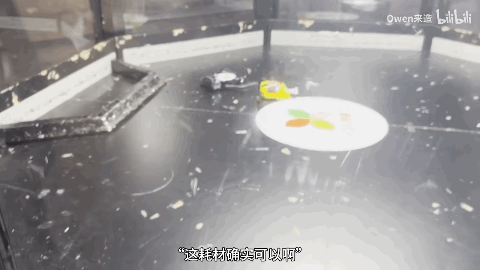
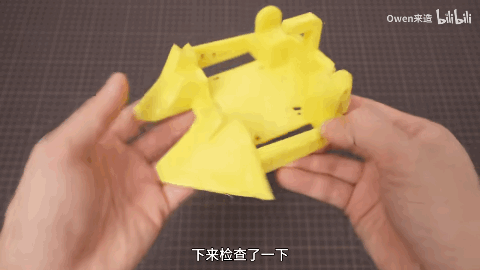
High-Rebound, High-Speed Applications
PEBA 90A mimics the rebound of a basketball, with quick energy return and strong shape memory. This makes it perfect for use in:
-
Mechanical grippers and robotic actuators
-
Wearable exoskeleton components
-
Sporting goods like shoe soles and gear padding
Its extreme toughness and elasticity also make it a great alternative in products that must respond to fast impacts or dynamic loading.
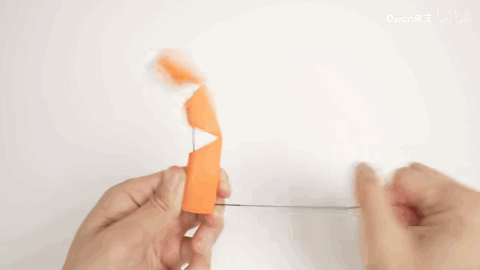
Conclusion: The Future of Flexible 3D Printing is PEBA
Whether you’re designing high-performance prosthetics, building shock-resistant drone parts, or fine-tuning midsole lattices, PEBA delivers a balance of comfort, resilience, and design flexibility that TPU struggles to match.
Why Choose FacFox?
At FacFox, we’ve extensively tested and validated PEBA filaments across multiple applications. Our engineers can help optimize your product by selecting the right PEBA grade, tuning lattice parameters, and ensuring flawless prints.
Ready to push the limits of flexible design? Contact FacFox today.